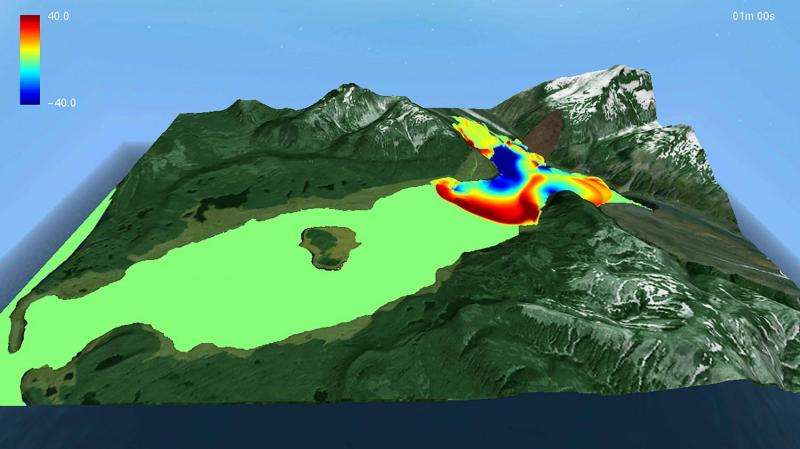Scientists develop a system that predicts the behavior of tsunamis in less than ten minutes

Researchers have created a simulator that predicts in less than 10 minutes the behavior of tsunamis generated by landslides. The system reduces the time spent in calculating different situations up to 60 percent. With this simulator, it is possible to immediately obtain information and thus facilitate more effective performance of authorities and rescue teams.
The numerical model developed by the researchers accurately predicts the effects of the wave and performs a simulation before the actual events in real life. The impact of a tsunami on the coast can range from 10 minutes to several hours from the time it occurs. The simulation takes between five and 10 minutes and provides information on the time it will take to land, the magnitude and height of the wave, the coastal penetration and the flood that it would cause, which allows researchers to anticipate the course of action that should be followed in each case.
Specifically, the research has led to an article titled 'Numerical simulation of tsunamis generated by landslides on multiple GPUs,' published in the Advances in Engineering Software journal. This work describes how the algorithm has been implemented so that several graphic processing units (GPUs) may be used simultaneously to accelerate the simulations. In addition, the article presents a simulation of the disaster that occurred in Lituya Bay, Alaska, in 1958. The case involved the largest wave ever to be registered associated with this type of event. The displacement of the slope of a mountain that dragged more than 30 million cubic meters of glacier over the bay generated a wave that flooded zones located more than 500 meters above sea level.
Although the usual mechanism of tsunami generation is the displacement of seabed faults, avalanches and landslides are common in fjords and lakes, and they can also be caused by the collapse of an island or an underwater landslide. The amplitude of tsunamis caused by landslides is greater than that of tsunamis caused by earthquakes, although they tend to have a smaller zone of influence.
"These phenomena are frequent in mountain areas, and they affect lakes as well as fjords. A landslide tsunami considered of great magnitude usually does not surpass 12 meters in height, which is why the case of Lituya is of special interest, given its magnitude," the authors of the paper told Fundación Descubre foundation.
Mathematics in natural disasters
The researchers involved in the study work in geophysical flow modeling and computer simulation, recreating, through computer simulations, the behavior of bodies of water when a giant wave or any other natural disaster occurs.
The use of these models also allows the validation of hypotheses about tsunami generation mechanisms. Thus, for example, in the 2004 tsunami that resulted in more deaths and missing persons than any in history, was the result of the displacement of a fault of more than 1000 kilometers along the Indian Ocean and came to produce waves up to 30 meters high in some places. "This is explained by submarine landslides caused by an earthquake in areas of submarine canyons. That is, in many cases, earthquakes, landslides and tsunamis usually develop together," the researcher says.
The technique developed by the researchers can be applied to other events of a similar nature, such as floods caused by river overflows, coastal shoreline storms, spills or hurricanes, among others. The mathematical models used for this are very similar to those used in tsunami simulations, since the flood mechanism is essentially the same.
Currently, EDANYA researchers are developing models for simulating the evolution of sedimentary beds and coastal morphology, as well as their application in other fields, such as astrophysics.
Provided by University of Granada




















